Pardon the radio silence since my last post! Sunday and Monday I was at John Marshall’s, Tuesday I spent recovering and doing laundry, and from Wednesday on I’ve been alternately buried in work stuff and book stuff. Both are in exciting phases. At work, my new project is still in the definition phase. Can’t give details, but it’s HUGE – over half the people at Skybox will be working on it over the next year and a half, and it touches literally everything Skybox has been doing up until now. And since I am the project manager for said enormous project, I have been scrambling the last week or two – both to come up to speed myself and to outline the project scope/schedule/roles and responsibilities for everyone else. Fortunately, I have help at all levels, but it’s still a pretty formidable challenge. Which is okay; I like challenges!
In parallel with taming the new-project chaos at work, I’ve been working on reducing the book chaos. I’ve now annotated the transcripts for eleven interviews and imported all the annotations in to Docear (the software I’m using to manage my references). I added tags to each topic, then filtered on those tags to get all the quotes specifically related to my first prototype chapter, which will be about getting started on a project. I put those quotes into my mindmap/outline of the chapter. I plan to write the rough draft of the chapter tomorrow.
I’m also in the process of identifying artists for each chapter. My tentative plan is to feature 1-2 artists in each chapter, sharing their thoughts on the material in the chapter. Some artists’ thoughts fit better in one chapter than another, of course, so I have been working on figuring out the best pairing of artists to chapters. That will also help me identify areas where I need more material, which in turn will shape my interview questions for the next set of interviewees.
In between that, I have two other projects I want to complete this weekend. The first is simple and prosaic – making a batch of soap. Mike and I like to make our own soap, mostly because we think it’s better than store-bought soap. I use a blend of coconut and palm oils, and the resulting soap lathers up nicely and doesn’t get soft and mushy. I just bought a bunch of fragrance oils and can’t wait to try them in soap.
The second project is much more ambitious – documenting everything I learned about katazome in three packed days at John Marshall’s studio. John gave us a wealth of information – not just what to do, but why to do it and how to improvise if necessary – and I need to write it all down before I forget it all. And I figure, while I’m at it, I might as well put it up on the website. So (with John’s permission) I’ve been working on a set of pages about katazome, which I’m hoping to publish tomorrow or Monday. Stay tuned!
One of the treats of visiting John’s studio was getting to see some of his textile treasures. Here are some of the photos I took – which, alas, show only a small fraction of the beautiful textiles he showed us!
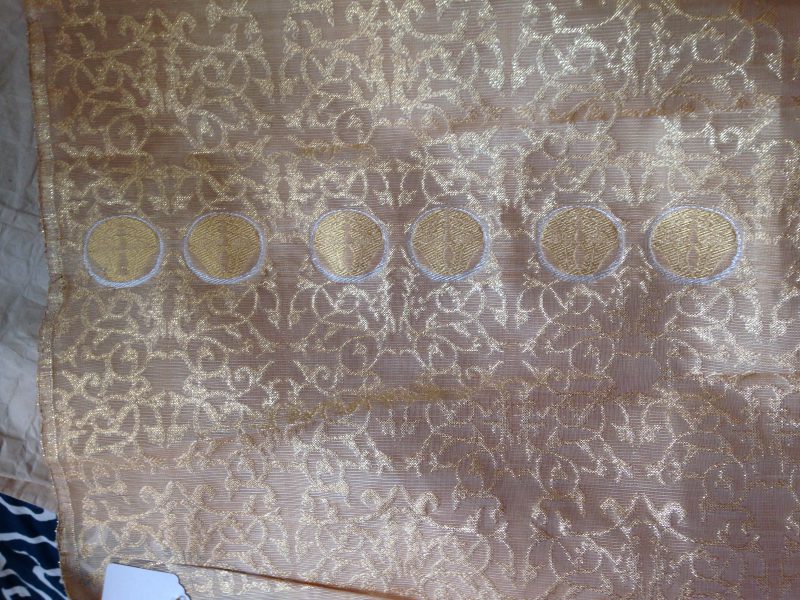
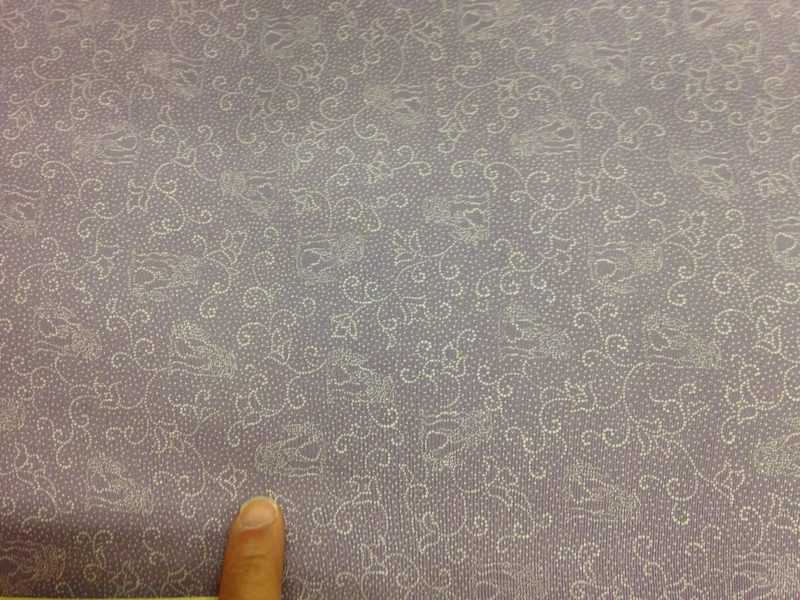
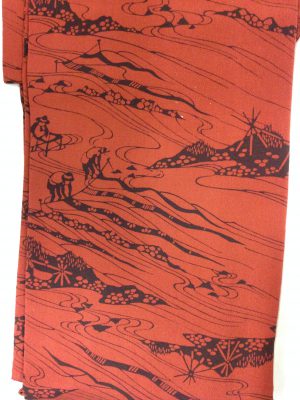
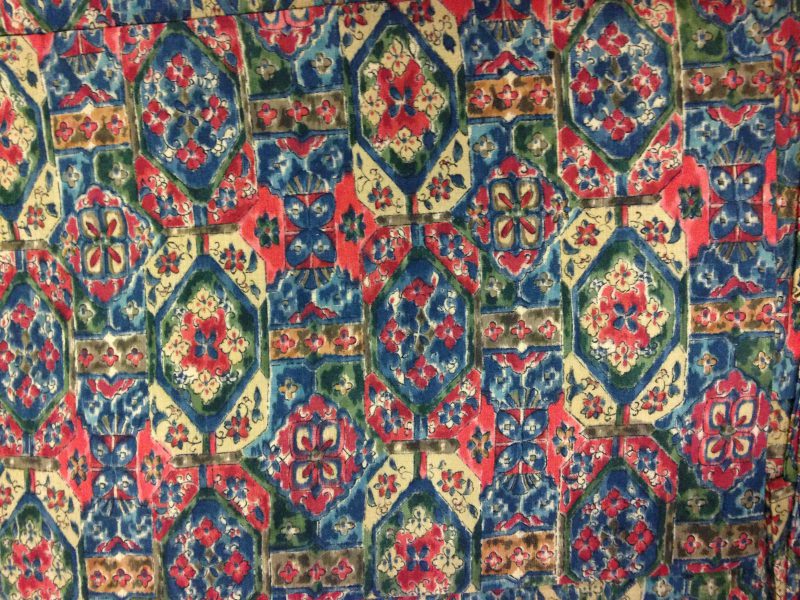
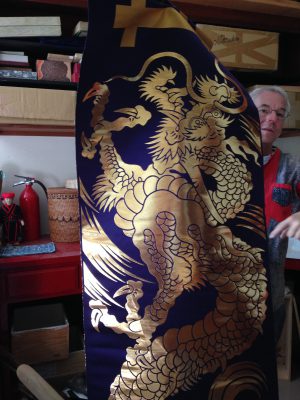
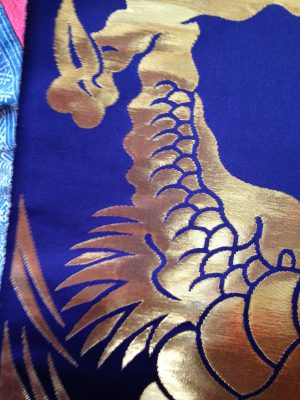
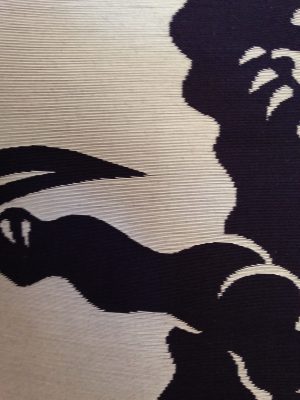
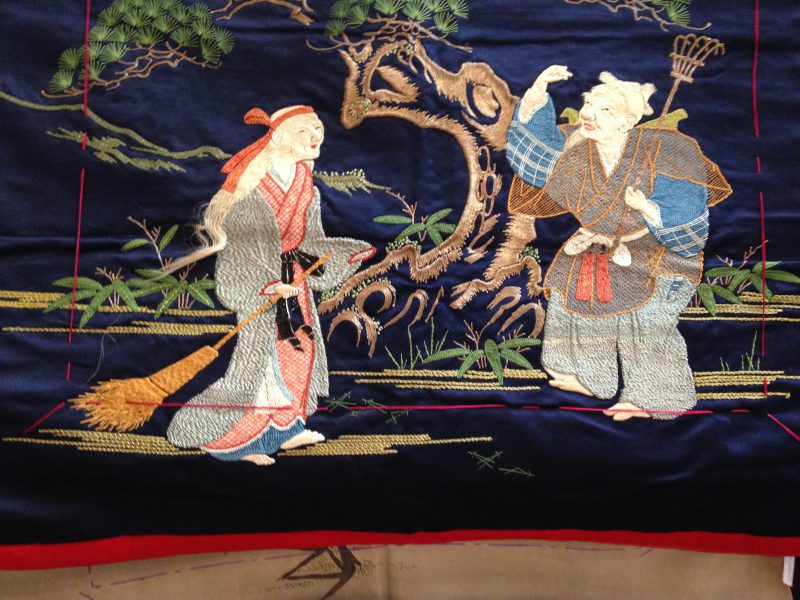
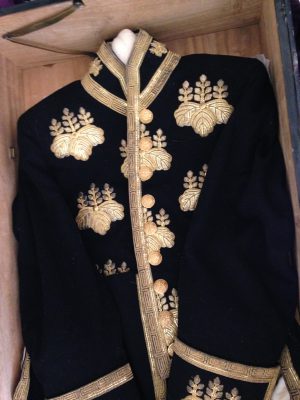

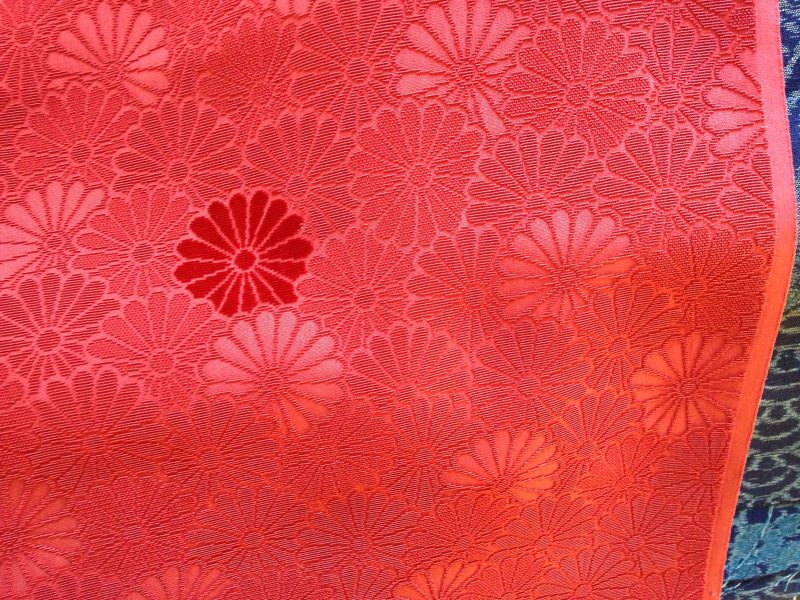

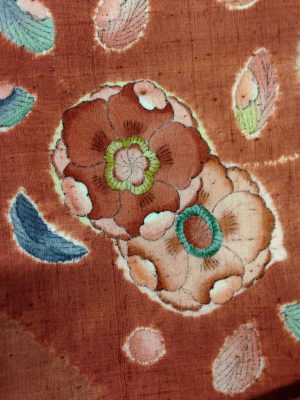
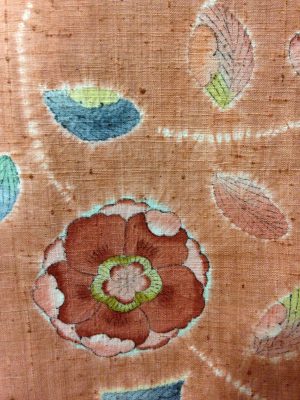
And, finally, for those patient enough to read this far, a feline treat: Fritz demonstrating (to Tigress) the proper use of a laundry basket! (And notice how deftly Tigress avoids his surprise attack, leaping gracefully to the cat tree.)
